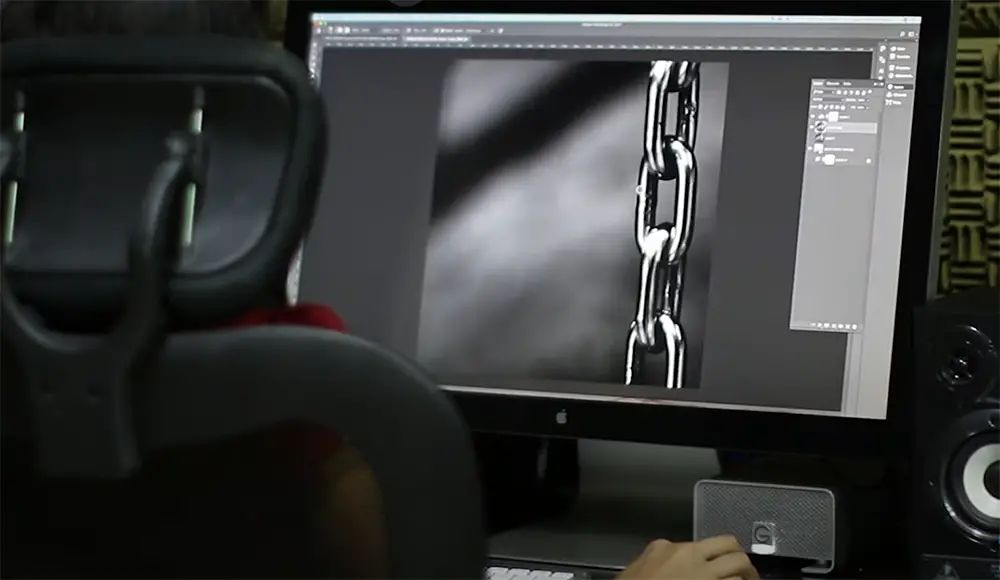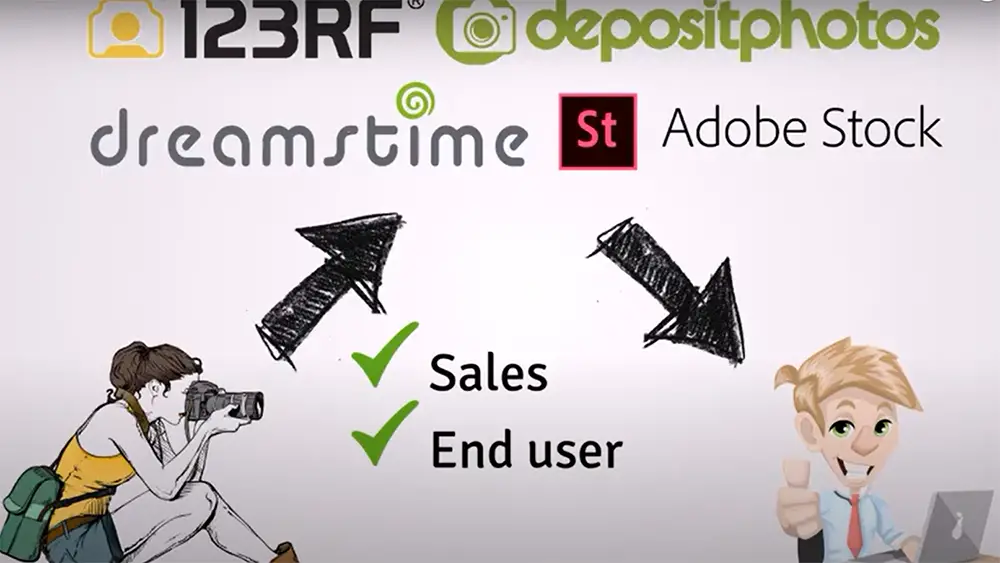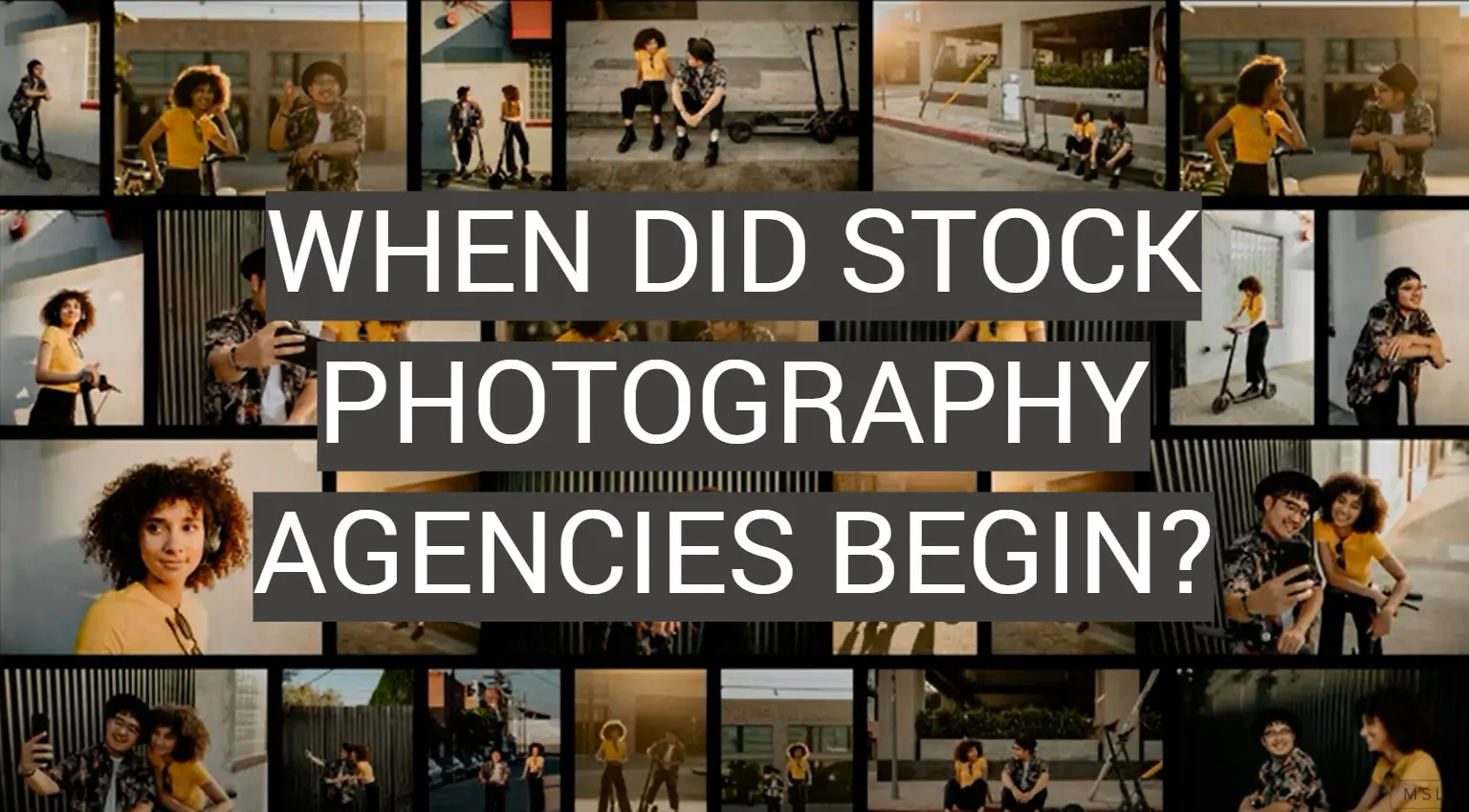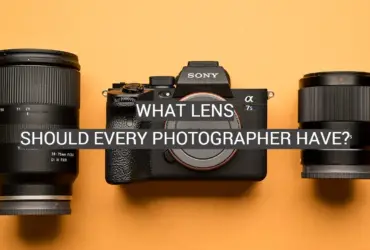The stock photography industry has a long and storied history. It began in the early days of photography when photographers would sell their photographs to magazines and newspapers. In those days, the only way to get access to quality photographs was to purchase them from a stock photography agency. Over time, the stock photography industry has evolved and changed with the times. This article will take a brief look at the history of the stock photography industry and how it has evolved.
What is a stock photography agency?
A stock photography agency is a company that supplies photographs to customers for a variety of purposes. Customers may use the photographs for commercial or personal projects. The agency typically owns the copyright to the images and sells licenses to customers for specific uses.
Stock agencies emerged in the early 20th century as businesses began to realize the potential of selling photographs as a commodity. Early stock agencies were typically run by photographers who sold their work. These agencies provided an outlet for photographers to sell their images without having to approach each customer individually.
One of the earliest and most successful stock photography agencies was Hulton Deutsch Collection, founded in 1936. The company amassed a large collection of images, including many iconic World War II photos. Another early agency was Black Star, founded in 1945. Black Star specialized in news and documentary photography and supplied images to magazines such as Life and Time.
In the 1970s and 1980s, stock photography agencies began to emerge as a distinct industry. Companies such as Corbis, Getty Images, and Shutterstock were founded during this period. These companies built large libraries of images by contracting with photographers around the world. Customers could access these libraries online and purchase licenses for specific uses.

The stock photography industry has continued to evolve in recent years. Microstock agencies, such as iStockphoto and Fotolia, have emerged which sell royalty-free images for relatively low prices. These agencies have made it possible for businesses to affordably license high-quality images for use in their marketing and advertising materials [1].
What are the Types of Stock Photography?
Macro-stock Photography
Macro-stock photography is the type of stock photography that you are likely to see in magazines or advertisements. This involves hiring a professional photographer to take high-quality, well-lit photos with a model release. Moreover, these photos are usually taken with a high-end DSLR camera.
Macro-stock photography is the most expensive type of stock photography, with prices ranging from $50 to $500 per photo.
Mid-stock Photography
Micro-stock Photography
Micro-stock photography is the least expensive type of stock photography, with prices ranging from $0.25 to $25 per photo. These photos are usually taken by amateurs with point-and-shoot cameras and do not require a model release [2].
Understanding the Basics in Stock Images (Copyright, Licensing)
Copyright and Ownership of Images
It wasn’t until the late 1970s that stock photography agencies began to emerge and become more popular. Before this, photographers often sold their images as “work for hire” which meant that the copyright and ownership of the image belonged to the person or company who had commissioned it. This system made it difficult for photographers to sell their images again because they no longer owned the rights to them.

The first stock photography agency, Image Bank, was founded in 1976 by Charles Geschke and John Warnock, two employees of Xerox Corporation. Image Bank was later acquired by Corbis, which is now owned by Getty Images. Stock photography agencies provide a marketplace for photographers to sell their images and for customers to buy them. Customers can buy images for one-time use or on a subscription basis. The agency takes a commission from each sale.
Model Releases and Commercial Use
Most stock photography agencies require photographers to submit model releases with their images. A model release is a document that gives the photographer permission to use the image for commercial purposes. The model release must be signed by the person who is pictured in the image (or their parent or guardian if they are under 18 years old).
The type of images that can be sold on a stock photography website depends on whether the website focuses on editorial or commercial images. Editorial images cannot be used for commercial purposes, such as advertising, because they do not have model releases. Commercial images can be used for any purpose.
Stock photography websites usually allow customers to search for images by keyword. Customers can also browse categories of images, such as “people” or “nature.” Once they find an image they like, they can buy it and download it.
Do you have any old photos lying around that you think could be sold as stock photography? If so, why not give it a try? You might be surprised at how much money you can make!
Editorial Stock Images
Editorial stock images are photos that can be used to illustrate a news story. They cannot be used for commercial purposes, such as advertising.
Editorial images can be sold on stock photography websites, but they must be labeled as “editorial” to indicate that they cannot be used for commercial purposes.
Most editorial images are taken by professional photographers who work for news organizations. However, anyone can take editorial photos as long as they comply with the requirements of the stock photography website.
For example, Getty Images requires that all editorial images must have been taken in public places and that the people pictured in the image must have consented to have their photo taken.

If you’re interested in selling your photos as editorial stock, be sure to check the requirements of the stock photography website you’re interested in before submitting your images.
Image Quality
The quality of an image is important, regardless of whether it’s being sold as editorial or commercial stock.
Images must be in focus and well-lit. They should also be free of any blemishes, such as dust spots or scratches.
It’s also important to make sure that your images are properly formatted before submitting them to a stock photography website. Most websites only accept JPEG files.
Tips for Shooting Stock Photography
Think Like a Marketing Director
If you’re new to stock photography, it can be helpful to think like a marketing director. What would they want images of? As you brainstorm ideas, keep in mind that many stock agencies are always on the lookout for photos with people in them. That’s because businesses often use stock photos for ads and other marketing materials. So if you have any good shots of people doing everyday activities, those might be perfect for stock agencies!
Know What Sells
Of course, it’s not enough to just take good photos. You also need to know what kinds of photos are in demand by stock agencies. Do some research to find out which topics are popular right now, and try to shoot images that fit those categories. For example, if you know that environmental issues are big right now, you could try taking some shots of people recycling or using public transportation.
Find a Need and Fill It

One great way to get started in stock photography is to find a niche that’s not being well-represented and try to fill it. For example, if you live in a small town, you might be able to sell photos of your community that other agencies don’t have. Or if you have any special skills or knowledge, you could focus on shooting photos related to those topics. Whatever you do, just make sure there’s a market for the kind of photos you’re taking!
Be an Expert
If you want to succeed in stock photography, it’s important to become an expert in your field. That means learning everything you can about taking great photos, and also keeping up with the latest trends in the industry. The more you know, the better your chances of selling your photos to stock agencies!
Use Natural Lighting
One of the most important things to remember when taking stock photos is to use natural lighting. That means avoiding using flash, and instead of shooting in well-lit areas. Natural light will help your photos look more realistic and less staged, which is what many stock agencies are looking for [3].
What are the Types of Stock Photography Licenses?
There are three types of stock photography licenses. Each has its pricing model and usage restrictions.
Public Domain Licenses
The first type of license is the Public Domain license. This means that the image is free to use for anyone for any purpose. The photographer has given up their copyright to the image and it is now in the public domain. These images are typically found on sites like Wikimedia Commons or Pixabay.
While these images are free to use, it’s important to check the licensing terms before using them for commercial purposes as some sites may have restrictions on how you can use them.
Public Domain licenses are great for bloggers, small businesses, and anyone else who needs an image but doesn’t want to pay for one. Just be sure to check the terms of use before using an image commercially.
Royalty-free Licenses

The second type of license is the Royalty-free license. This means that you can use the image an unlimited number of times for any purpose once you’ve purchased the license.
You will typically pay a one-time fee for the royalty-free license and then you can use the image as much as you want. These licenses are great for businesses that need to use an image multiple times or for anyone who needs an image for commercial purposes.
Just be sure to read the terms of the license before using an image commercially as some sites may have restrictions on how you can use them.
Rights-managed Licenses
The third and final type of license is the rights-managed license. This means that you can use the image for a specific purpose and for a limited time.
You will need to contact the photographer or agency to purchase this type of license and they will typically charge you a fee based on how you plan to use the image. These licenses are great for businesses that need an image for a specific campaign or for anyone who needs an image for a short-term project.
The rights-managed licenses are the most expensive but they offer the most flexibility in terms of how you can use the image. Just be sure to read the terms of the license before using an image commercially as some sites may have restrictions on how you can use them [4].
How Do Stock Photography Agencies Work?
While the first stock photography agency opened in the early 1900s, it wasn’t until the 1950s that the industry began to take off. Stock photography agencies provide photographers with a way to sell their photos to businesses and individuals who need them for commercial purposes. The agencies typically handle all of the marketing and promotion for the photographer, as well as any legal issues that may arise.

Most stock photography agencies work on a commission basis, meaning they take a percentage of each sale that is made. This can range anywhere from 20-50%, depending on the agency and the photographer. Some agencies also offer membership plans, where photographers can pay a monthly or yearly fee in exchange for access to exclusive content or discounts on services.
Trends in the Stock Photography Industry
The stock photography industry has changed a lot since it first began in the early 1900s. The way that photographers sell their photos, the types of photos that are in demand, and the platforms where people can buy stock photos have all evolved.
In the early days of stock photography, photographers would submit their prints to agencies who would then offer them for sale to publishers. This system continued for many years until the digital age made it possible for photographers to sell their photos online directly to buyers.
Nowadays, there are many different types of stock photography agencies, each with its niche. Some agencies focus on selling royalty-free images, while others specialize in selling specific types of photos (such as food or nature photos). There are also stock agencies that only sell photos from a certain region or country.
How to start the stock-photography business?
If you want to start a stock-photography business, the first thing you need to do is find a niche. You can’t just be a “jack of all trades” and expect to succeed. Find what you’re good at, whether it’s landscapes, portraits, or sports photography, and build your business around that.
Once you’ve found your niche, the next step is to start building up a portfolio of images. This can be done by scouring stock photo websites for images that fit your style, or by taking your photos and submitting them to stock photo agencies.

The final step is to start marketing yourself. Create a website or blog where you can showcase your work, and make sure to list your contact information so potential clients can reach you. You can also submit your photos to online directories, or participate in forums and discussion groups related to your niche.
What stock photos are the most popular?
The stock websites and agencies offer a variety of photos to meet the needs of businesses, bloggers, and others who need photos for their products or services. The most popular stock photos are those that are general and can be used for a variety of purposes.
The most popular themes include:
- People
- Landscapes
- Animals
- Objects
These stock photos are popular because they can be used for many different purposes. For example, a photo of a person can be used on a website or in an advertisement. A landscape photo can be used as the background for a blog post or as the cover photo for a book. And, an animal photo can be used in an educational video or on a pet care website.
What are some other popular stock photography topics?
- Business and technology
- Holidays
- Food and drink
- Fashion and beauty
- Sports and fitness
- Travel and outdoors
These topics are also popular because they offer photos that can be used for many different purposes. For example, a business owner may need photos of people working with computers for their website. A blogger may need photos of Halloween decorations for their blog post about the holiday. And, a food company may need photos of their products for their website or social media pages.
Tips on finding good stock photos

There are some other popular tips for finding good stock photos:
- Use search engines like Google Image Search or Flickr Creative Commons to find free photos.
- Check out stock photo websites like iStockPhoto or Shutterstock.
- Use social media sites like Pinterest or Tumblr to find interesting photos.
Why is Shutterstock so popular?
Shutterstock is one of the most popular stock photography agencies for a variety of reasons. For one, they have a huge selection of images to choose from – over 80 million. They also offer affordable pricing options and plans that make it easy for even small businesses to get started with using stock photos. And finally, Shutterstock offers great customer service and support, which is always important when you’re working with any kind of online service.
The photos on Shutterstock are organized into different categories so you can easily find the type of image you’re looking for. Plus, if you have a specific idea in mind, you can use the search bar to find images that match your keywords.
Why should you use iStock?
iStock is one of the world’s leading stock photography agencies. With over 18 years of experience in the industry, we’ve built up a comprehensive catalog of high-quality images that are perfect for all your needs.
Here are just some of the reasons why you should use iStock for all your stock photography needs:
- It has a huge selection of images to choose from, with new additions added every day.
- The images are high quality and resolution, so you can be sure they’ll look great no matter where you use them.
- The prices are unbeatable – we offer some of the most competitive rates in the industry.
Check these posts to improve your photography knowledge:
- How to Start a Photography Business With No Experience?
- How Can You Get Started With Photography Internships?
- Male Boudoir Photography Tips
Stock Photography Agencies: Beginnings and Milestones
Stock photography agencies have become a crucial resource for businesses, designers, and individuals seeking high-quality images for various purposes. This table provides an overview of the inception years of some of the most prominent stock photography agencies, along with their key milestones and notable features.
| Agency | Year Established | Key Milestones | Notable Features |
|---|---|---|---|
| Getty Images | 1995 | • Acquired PhotoDisc and iStockPhoto • Launched Thinkstock • Partnered with Flickr for content |
• Vast image collection • Premium and exclusive content options • Extensive licensing options |
| Shutterstock | 2003 | • Went public in 2009 • Introduced Shutterstock Editor • Expanded video content library |
• Diverse image and video collections • Subscription and on-demand plans • Advanced search filters |
| iStock | 2000 | • Founded by Bruce Livingstone • Introduced credit-based payment system • Launched iStock Video |
• Affordable pricing with credit system • Exclusive and non-exclusive contributor options |
| Adobe Stock | 2015 | • Integrated with Adobe Creative Cloud • Expanded 3D and motion graphics content |
• Seamless integration with Adobe software • Diverse media types available |
Explanation:
- Agency: Lists the names of the stock photography agencies being compared.
- Year Established: Displays the year in which each agency was founded or established.
- Key Milestones: Outlines significant events or achievements in the history of each agency. This may include mergers, acquisitions, partnerships, and the launch of new platforms.
- Notable Features: Highlights distinctive features or offerings that set each agency apart from others. This could include the size of their image collections, subscription options, and other unique aspects of their services.
By examining this table, readers can gain insights into the timelines of major stock photography agencies and how they have evolved over the years to become the valuable resources they are today.
FAQ
How did stock photography start?
The first stock photography agency was started in the 1920s by H. Armstrong Roberts. He saw a need for professional-quality photographs that could be used by businesses and advertisers. Roberts began selling his photos to magazines and newspapers, and eventually started his agency.
Other agencies soon followed suit, and by the 1950s, stock photography was a thriving industry. Many of the biggest names in the business, such as Robert Stock and Fred Sommers, were established during this time.
The industry continued to grow throughout the second half of the 20th century, with new agencies opening up and new photographers joining the ranks. Today, there are hundreds of stock photography agencies around the world, catering to every imaginable niche.
When did photography become popular with the public?
The public began to take an interest in photography in the late 1800s when cameras became more affordable and easier to use. The invention of the Kodak camera in 1888 made photography even more accessible, and people began using it for a variety of purposes.
By the early 20th century, photography was a well-established hobby, and many people were taking pictures for fun. It wasn’t until the 1950s that stock photography took off, though. This was thanks to the rise of advertising and the need for high-quality images that could be used commercially.
Nowadays, everyone from amateur shooters to professional photographers can submit their photos to stock agencies. With such a wide range of options available, it’s easy to find the perfect image for any project.
Who invented stock photos?
H. Armstrong Roberts is credited with inventing stock photos. He started the first stock photography agency in the 1920s and saw a need for professional-quality photographs that could be used by businesses and advertisers. Roberts began selling his photos to magazines and newspapers, and eventually started his agency.
Other agencies soon followed suit, and by the 1950s, stock photography was a thriving industry. Many of the biggest names in the business, such as Robert Stock and Fred Sommers, were established during this time.
Nowadays, there are hundreds of stock photography agencies around the world, catering to every imaginable niche. Thanks to Roberts’s vision, anyone can now access high-quality photos for their projects.
Do most stock agencies have their images online?
Yes, most stock agencies have their images online. This makes it easy for people to find the perfect photo for their project. You can usually search by keyword or category, and many sites also offer advanced search options. This makes it easy to find the right image for any need.
However, some agencies do require you to purchase a subscription to access their photos. This is usually only the case for professional photographers or those who need a large number of photos regularly. For most people, buying individual photos as needed is more than sufficient.
In conclusion, stock photography is a thriving industry that offers high-quality photos for a wide range of needs. Thanks to the internet, it’s easier than ever to find the perfect image for any project. Thanks to H. Armstrong Roberts, you can all enjoy the benefits of stock photos.
What was the first stock photo?
The first stock photo is believed to be H. Armstrong Roberts’s “Lunchtime,” which was taken in 1932. Roberts was a pioneer in the field of stock photography and started the first agency, Roberts & Company, in the 1920s. He saw a need for professional-quality photographs that could be used by businesses and advertisers.
Roberts began selling his photos to magazines and newspapers, and eventually started his agency. Other agencies soon followed suit, and by the 1950s, stock photography was a thriving industry. Many of the biggest names in the business, such as Robert Stock and Fred Sommers, were established during this time.
Why is stock photography even a thing?
Stock photography is a thing because it provides high-quality photos that can be used for a variety of purposes. This type of photography began in the 1950s when businesses and advertisers needed professional images that they could use commercially.
How do I start a stock photography agency?
If you’re interested in starting a stock photography agency, the first step is to build up a portfolio of high-quality images. You can do this by taking your photos or sourcing them from other photographers. Once you have a selection of images, you’ll need to set up a website and start marketing your business.
What are stock photography agencies?
Stock photography agencies are companies or organizations that curate and distribute a vast collection of images and videos captured by photographers, videographers, or artists. These agencies license these visual assets to individuals, businesses, and creatives who need high-quality images for various purposes.
What was the role of the “Bureau of Indexing” in stock photography’s history?
The “Bureau of Indexing” was a pioneering effort in the history of stock photography. Established in 1920 by H. Armstrong Roberts, it was the first known stock photography agency. Roberts began photographing various subjects and storing the images in a filing system, allowing users to license images for specific uses. This marked the beginning of the stock photography industry.
When did stock photography agencies go digital?
The stock photography industry underwent a significant transformation with the advent of digital technology. In the mid-1990s, stock photography agencies began digitizing their collections and making them available online. This transition allowed for more efficient access to a broader audience and opened new possibilities for licensing images for online use.
How did the internet impact stock photography agencies?
The internet revolutionized the stock photography industry. With the rise of the internet, stock photography agencies could reach a global audience instantly. Clients gained easy access to vast libraries of images, and licensing became quicker and more convenient. This expansion in reach and accessibility significantly accelerated the growth and popularity of stock photography.
What are some well-known stock photography agencies today?
As the stock photography industry flourished, numerous agencies emerged. Some well-known ones include Shutterstock, Getty Images, Adobe Stock, iStock (previously iStockphoto), Pixabay, and Unsplash, among others. These agencies provide a diverse range of high-quality images, catering to the needs of a vast clientele worldwide.
How has the concept of stock photography evolved over the years?
Initially, stock photography mainly focused on generic and staged images. However, with changing demands and trends, the industry evolved to offer more authentic and diverse visuals. Contemporary stock photography agencies now feature images capturing real-life scenarios, cultural diversity, and unconventional subjects, reflecting the dynamic needs of creative projects and marketing campaigns.
Useful Video: Stock photography in 2022: A beginner’s guide to selling photos & videos online
Conclusion
In conclusion, stock photography agencies have a long and storied history. They’ve come a long way since the early days of black and white prints, and they continue to evolve as the needs of photographers and businesses change.
The stock photos of today are far different from the stock photos of yesterday, but one thing remains the same: they’re a valuable resource for anyone who needs to find the perfect image.
What began as a way to sell prints to newspapers has become a multi-million dollar industry that provides access to millions of images from photographers all over the world.
References:
- https://www.stockphotosecrets.com/buyers-guide/what-are-stock-photo-agencies.html
- https://www.stockphotosecrets.com/questions-answers/what-are-stock-images.html
- https://contrastly.com/popular-stock-photography-sites/
- http://shutha.org/node/579












Leave a Reply